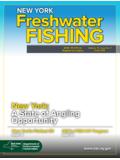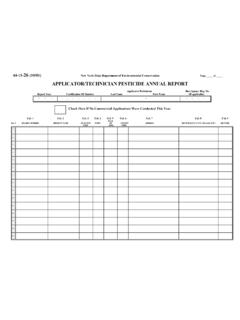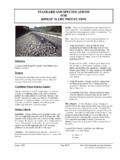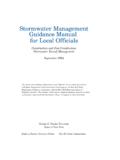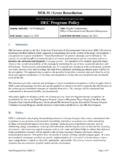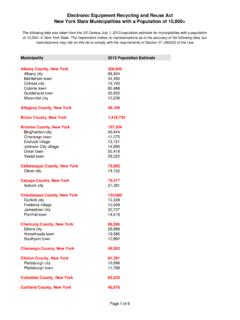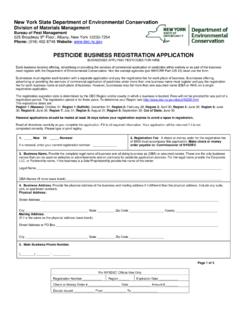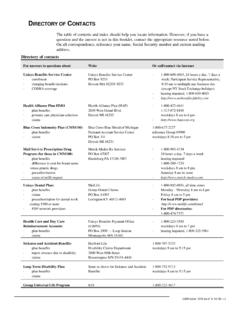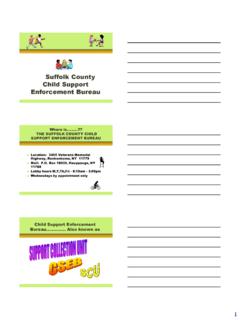Transcription of Day-old Pheasant Chick Program Guide - New York State ...
1 New york State department of environmental ConservationCooperativeDay-old Pheasant Chick ProgramGuideGuide to Public Pheasant Rearing ProjectsJanuary 1982 Revised January 2004 by Michael J. MurphyIllustrations by Michael StickneyNew york State department of environmental ConservationDivision of Fish, Wildlife and Marine ResourcesBureau of WildlifeTHE MISSION OF THE BUREAU OF WILDLIFETo provide the people of New york the opportunity to enjoy all the benefits of the wildlife of theState, now and in the future. This shall be accomplished through scientifically sound managementof wildlife species in a manner that is efficient, clearly described, consistent with law, and inharmony with public Program VISIONTo meet the current and future needs of people for Pheasant hunting, observation.
2 And educationalopportunities within biological constraints and consistent with available PROPAGATED PHEASANTS GOALTo provide artificially propagated pheasants in areas of the State where there are limitedopportunities to enjoy wild pheasants within fiscal and land use information contained in this Guide is designed to provide rearing and release guidance forindividuals receiving Day-old Pheasant chicks from the department of environmental conservation (DEC). There are two parts. Part I provides general Program information including Program historyand requirements for participation. Part II outlines the Pheasant rearing and release proceduresnecessary to properly care for pheasants.
3 There are many different techniques for raising techniques found in this Guide are demonstrated in the DEC video, How to Raise Ring-neckedPheasants. The video is available from DEC offices (Appendix I), the DEC Richard E. ReynoldsGame Farm, and Cornell Cooperative Extension offices. It was developed to complement the Day-old Pheasant Chick Program rearing need not be difficult and can offer a satisfying experience for Program participants enjoy watching young pheasants develop into beautiful adult birds. Others enjoya summer sighting or cackling rooster. Hunters enjoy the opportunity that released pheasantsprovide in areas with few wild pheasants.
4 Hunting released pheasants with a well-trained bird dogis encouraged. A 1995 survey of 104 responding Pheasant hunters at the Cayuga/TompkinsCooperative Hunting Area found that 102 hunters or 98 percent hunted with a dog. Huntingpheasants with a well trained bird dog is an important part of the total experience and is one reasonsportsmen and sportswomen support the continued stocking of State -reared pheasants. TABLE OF CONTENTSPart I: General Program InformationPageKey Program Points 1 History 2 Objectives 2 Participation 3 How to Apply 4 Delivery 4 Part II: Pheasant Rearing and Release ProceduresThe Brooder House 5 Keys to Successful Brooding and Rearing 6 Ventilation 6 Temperature 7 Water 7 Feed 7 Lighting 9 Cleanliness 9 Feathering 9 Feather Picking 10 Pens 10 Selecting a Release Site 14 Release Guidelines 14 Habitat Improvement Practices 16 Disease Control 17 Coccidiosis 17 Gapeworm 17 Molds and Mold Toxins 17 Botulism 17 Medications 17 Predators 18 Costs 18 DEC Reference Materials 18 Appendix I department of environmental conservation Wildlife Offices 19 Appendix II Game Bird and Poultry Supply Vendors 20 Appendix III Brooding and
5 Rearing Instructions Checklist 21 Appendix IV Estimated Program Expenditures 221 Key Program Points The DEC distributes 60,000 or more Day-old chicks annually. Anyone can apply to participate in the Day-old Pheasant Chick Program . Participants must have the appropriate brooding facility and outdoorrearing pen. Release sites must be open to public Pheasant hunting. Birds may not to be released on private shooting preserves. Applications for chicks must be submitted by March 15th. Participants must become familiar with the Day-old Pheasant ChickProgram Guide . Day-old Pheasant chicks are provided to participants in April, May, orJune. Pheasants must be released at eight weeks of age or older, but no laterthan the end of the Pheasant hunting season.
6 Pheasants provided to participants may not be bought, sold or traded. Habitat improvement projects on release sites are encouraged. For more information about pheasants call the State game farm at (607)273-2768 or email us at and type the word pheasants in the subject Fact: In 1909, New york s first gamefarm was established in Sherburne (ChenangoCounty) and is now home to the department sRogers environmental Education I: GENERAL Program INFORMATIONH istory:Successful releases of pheasants in New york occurred in 1892 on Gardiners Island (located off theeast end of Long Island) and near Geneseo (Livingston County) in 1903. So successful were thesereleases, that in 1908 the first authorized hunting season for pheasants in New york was further the spread of this popular game bird, the State conservation department (predecessor ofDEC) established its first game farm in 1909.
7 By 1910 surplus eggs were distributed to sportsmenand farmers, to be hatched and reared by broody hens. This activity first gained official recognitionin 1919, when the Division of Fish and Game placed a Propagation Superintendent at the disposalof game clubs needing technical assistance. As broody hens became more difficult to secure,incubators came into use and the Pheasant egg Program became the Day-old Chick Program . A GameManagement Unit was formed in 1939 and the Day-old Chick Program was expanded. In the earlyyears, 4-H youths received $.50 and later $ each Pheasant reared and everyone interested in game andhunting enthusiastically supported the day-oldchick the late 1960s the $ reimbursement wasdiscontinued and the full cost of bird rearingwas shouldered by the 4-H youngster or a sponsor.
8 As a result, the 4-H and sportsmen programsbecame more closely related, with some sportsmen s clubs underwriting the cost of facilities andfeed for pheasants reared by 4-H youths. In the 1980s participants were encouraged to release birdscloser to the hunting season to increase harvest. Birds released in the summer have higher mortality,especially from predators, than those released just prior to or during the Pheasant hunting 1999, the DEC adopted A Ten-Year Management Plan for Ring-necked Pheasants in New plan objectives call for the annual distribution of 60,000 Day-old Pheasant chicks and forimproving habitat on 75 percent of the release sites.
9 Today all Pheasant propagation activities takeplace on the DEC Richard E. Reynolds Game Farm near Ithaca, in Tompkins County. Objectives:People choose to raise and release pheasants for a variety of reasons, but not everyone knows theobjectives of this Program . In addition, there are many misconceptions about propagated misconceptions make it difficult to understand why the DEC operates a Pheasant propagationprogram and the benefits provided by propagated pheasants. The following objectives provide aclear picture of what the Day-old Pheasant Chick Program offers. Distribute 60,000 or more Day-old Pheasant chicks to approved Program cooperators - TheState game farm provides Day-old Pheasant chicks to all approved participants.
10 Applicantscan apply for any number of chicks, as long as they have the proper facilities. 3 Pheasant Fact: Pheasant hunters in New Yorkharvested approximately 185,000 pheasants in2002. Provide hunting opportunity for 40,000 Pheasant hunters - The main purpose of all the Statepheasant propagation programs is to provide Pheasant hunting opportunity. Since very fewpropagated pheasants released in thesummer and fall survive until spring,these programs are not intended torestore pheasants. It s important tounderstand that the closer pheasants arereleased to the fall Pheasant huntingseason, the greater the potential harvest. Provide observational opportunities for participants, landowners and the general public -The Pheasant is a popular game bird depicted in photographs, paintings, on stamps andelsewhere.
